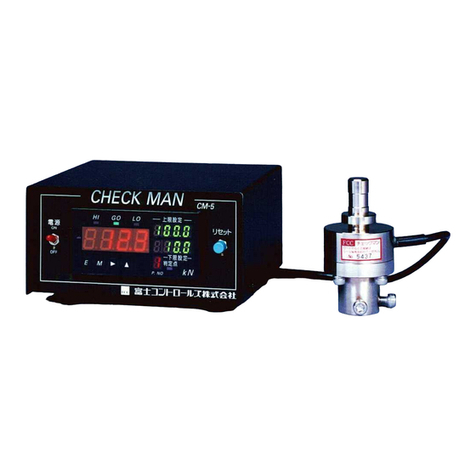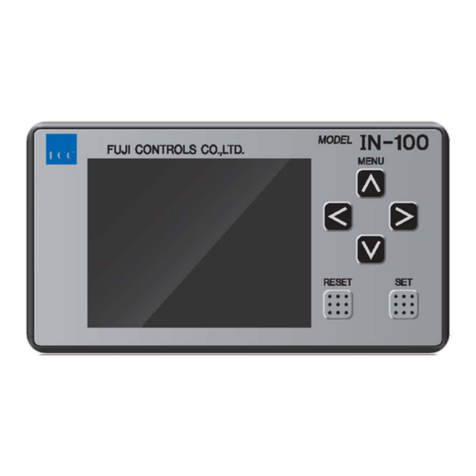
−2−
*Load measurement complete signal: After the system receives this signal, it will stop measuring loads
and compare the measured value with the preset upper and lower limits. At the same time, the system will
let you know the result of the comparison using the display and by outputting a signal on the relay
contacts.
*Special analog sample and hold circuit: In the usual digital sampling and display method, if the
sampling rate is less than 3,500 times per second while press fitting, the system will take a relatively long
time to convert the analog value into a digital one. If the load changes during this conversion, then even
though the system can measure the change, it cannot display the new reading right away. The special
analog sample and hold circuit in these units overcomes this problem. It is constantly measuring the load,
even while the system is converting the most recent value from analog to digital. In the peak load
measurement mode (method used to display the peak load during a certain period of time), the system
stores new load values throughout the interval as analog voltages, in preparation for the next conversion
of the peak value. In the constant measurement mode (method for displaying changes in the load as they
happen), the system will store the current measured load, and simply display the current load when the
load measurement complete signal is input. Then the system will compare these values with the specified
limits.
Since this system is equipped with a high-speed analog sample and hold circuit, it can accurately identify
the peak load and measure the constantly changing load with precision regardless of the digital display
operation.
③Load upper-limit digital display (green LED characters)
This display shows the upper limit that will be used as the criterion for evaluating the actual load.
④Load lower-limit digital display (green LED characters)
This display shows the lower limit that will be used as the criterion for evaluating the actual load.
*When entering the upper or lower limits, or when any function is selected, the names of the items to
select will be displayed in these displays, in alphabetical order.
⑤GO indicator (green LED)
After the system receives a load measurement complete signal, if the load shown on the digital load
display is between the specified upper and lower limits, this LED indicator will light.
Upper limit value ≧Measured load value ≧Lower limit value
At the same time, terminals ⑪and ⑫ ("a" contacts: normally open)on the terminal block (on the
back)will be shorted together until the next reset (start)signal is input or until the system is manually
reset.
⑥HIGH-NG indicator (red LED)
When the system has received a load measurement complete signal, if the measured load (displayed on
the digital load display)exceeds the preset upper limit, this LED indicator will light.
Upper limit value <Measured load value
At the same time, terminals ⑨and ⑩ ("a" contacts: normally open)on the terminal block (on the
back)will be shorted together until the next reset (start)signal is input or until the system is manually
reset.
⑦LOW-NG indicator (red LED)
When the system has received a load measurement complete signal, if the measured load (displayed on
the digital load display)is less than the preset lower limit, this LED indicator will light.





























